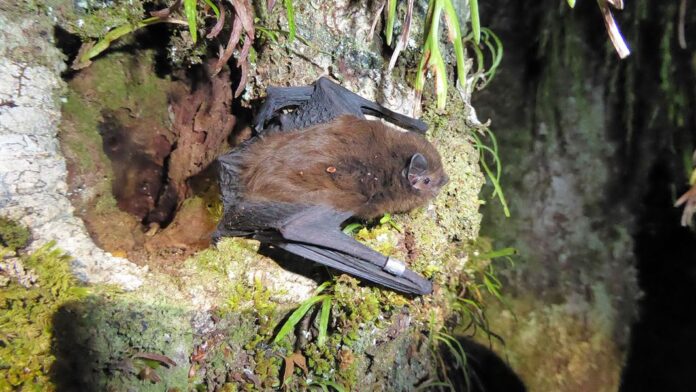Source: Department of Conservation
Date: 24 March 2022
New Zealand’s long-tailed bats/pekapeka were controversial winners of Forest and Bird’s Bird of the Year competition in 2021, and recent monitoring work involving DOC and local residents has confirmed there are still populations of the secretive animals in the Dart and Rees Valleys near Glenorchy.
Pekapeka roost and raise their young in tree cavities, making them very vulnerable to introduced predators like stoats, possums, and cats cornering and killing them.
The Glenorchy community has banded together to protect their unique mammalian locals by carrying out predator control in braided rivers, beech forests, farmland, and roadsides. These efforts not only help protect bats, bird species, and other native flora and fauna.
As well as predator control work, every year DOC coordinates volunteers who gather in the dark to walk sections of road in the two valleys carrying bat detector units to gauge how the pekapeka populations are faring. More than 20 years of data has been collated, with the first survey run in 1995, and then annually from 1998.
DOC Ranger Sandra Barnaba says bats use echolocation to navigate around obstacles and find their prey in the dark.
“They continuously ‘shout’ and use the returning echo to ‘see’ objects in their paths. Bat detectors convert their ‘shouting’ into audible lower frequency noises humans can hear as a series of repeated clicks.”
The recent survey revealed pekapeka are persisting in the area. The survey data has been sent to DOC’s Terrestrial Science Unit for statistical analysis and comparison with past and future results.
“Research has shown that without effective predator control long-tailed bat populations decline. Knowing bats are present here really reinforces enthusiasm for predator control locally.”
Along with DOC’s ongoing Tiakina Nga Manu predator control programme, Air New Zealand has been providing funding for predator trapping efforts on both Public Conservation Land and private land, and the Routeburn Dart Wildlife Trust has traps along the Dart and Rees Rivers and valley roads.
The Routeburn Dart Wildlife Trust has also received Jobs for Nature funding from the Government, to expand their trapping efforts even further.
“Members of the public can help too if they think they might have bats in their area. An easy way to help protect them is to have a trap or two for stoats and possums in the back yard or join a local trapping group.”
Background information
Bat activity can be highly variable and is influenced by numerous factors including temperature, weather conditions, time of night, time of year, habitat type and how much of a flying insect buffet there is around for them. The surveys are done when the bats are most active, that is on warm, fine and calm nights in November and February, within two to three hours of sunset. Generally. In the past two surveys have been carried out each year, one in spring before breeding and one in summer when the young bats have started flying. This year (2022) a survey is not being done in February. People can contact the Queenstown DOC Office if they are interested in helping with the surveys.
Routeburn Dart Wildlife Trust and Whakatipu Wildlife Trust, an umbrella organisation for several trapping groups around Queenstown, are members of a large-scale predator control initiative called Southern Lakes Sanctuary. Southern Lakes Sanctuary also has DOC Jobs for Nature funding.
Contact
For media enquiries contact:
Email: media@doc.govt.nz



